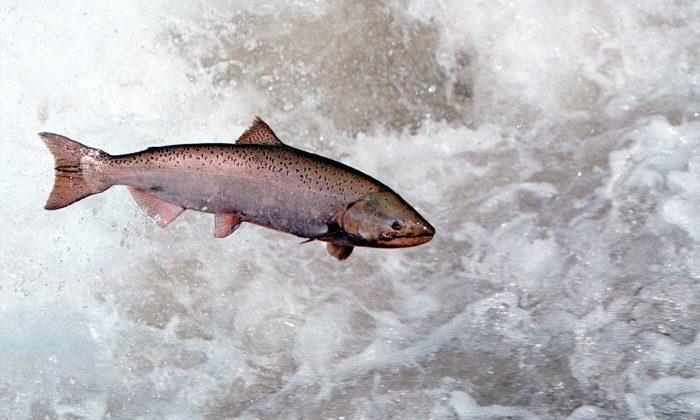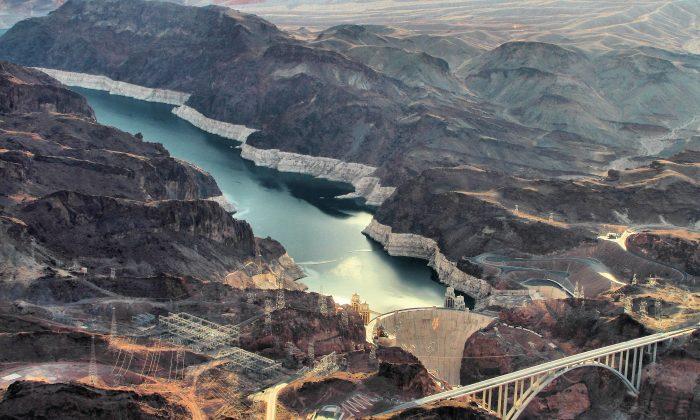Altering environments to suit our needs is not new. From clearing land to building dams, we’ve done it throughout history. When our technologies and populations were limited, our actions affected small areas—though with some cascading effects on interconnected ecosystems.
We’ve now entered an era in which humans are a geological force. According to the website Welcome to the Anthropocene, “There are now so many of us, using so many resources, that we’re disrupting the grand cycles of biology, chemistry, and geology by which elements like carbon and nitrogen circulate between land, sea, and atmosphere. We’re changing the way water moves around the globe as never before. Almost all the planet’s ecosystems bear the marks of our presence.”
One of our greatest impacts is global warming, fuelled by massive increases in atmospheric carbon dioxide from burning oil, coal, and gas. Thanks in part to self-preserving industrialists, complicit governments, and deluded deniers, we’ve failed to take meaningful action to address the problem, even though we’ve known about it for decades. Many now argue the best way to protect humanity from the worst effects is to further alter Earth’s natural systems through geoengineering.
Geoengineering to combat climate change is largely untested. Because we’ve stalled so long on reducing carbon emissions and still aren’t doing enough, we may have to consider it. What will that mean?
As it relates to climate change, geoengineering falls into two categories: solar radiation management and carbon dioxide removal. The former involves reflecting solar radiation back into space. The latter is aimed at removing carbon dioxide from the atmosphere and storing it.
Solar radiation management includes schemes such as releasing sulphur aerosols into the atmosphere to scatter sunlight and reduce radiation, creating or whitening clouds by spraying seawater or other materials into the air, and even installing giant reflectors in space. These methods don’t affect CO2 levels and so don’t address issues like ocean acidification, but they offer possible quick fixes to reduce warming.
An example of carbon removal is fertilizing oceans with iron. Iron stimulates growth of small algae called phytoplankton, which remove carbon dioxide from the sea and release oxygen through photosynthesis. This allows the oceans to absorb additional CO2 from the atmosphere. When the plankton die and sink to the ocean floor, they become buried under other materials, storing the carbon within them.
Canada’s federal government as well as the government of the province of Alberta have spent billions on their favoured carbon-reduction method, carbon capture and storage—trapping CO2 released by burning fossil fuels and pumping it into the ground—but this method has yet to be perfected.
Many schemes are controversial and have shown mixed results in tests, and the danger of unintended consequences is real, including further catastrophic, irreversible damage to the climate system.
One major drawback with geoengineering is the mistaken idea that it can be a substitute for reducing greenhouse gas emissions that cause climate change. That many geoengineering projects are fraught with danger and would not resolve the problem quickly enough or even effectively—and would do little or nothing to resolve other fossil fuel problems such as pollution—makes this a critical concern.
There’s also the matter of who would decide what methods to apply and when and where. The issue of “rogue” geoengineering has also cropped up in my part of the world, when an American businessman working with the Haida village of Old Massett dumped 100 tonnes of iron sulphate into the ocean in 2012 for a salmon restoration and carbon-reduction project.
A U.K. Royal Society study concludes that geoengineering “should only be considered as part of a wider package of options for addressing climate change” and carbon dioxide reduction methods should be preferred over more unpredictable solar radiation management.
Scientists at the Berlin Social Science Research Centre suggest creating “a new international climate engineering agency to coordinate countries’ efforts and manage research funding.” Because some geoengineering is likely unavoidable, that’s a good idea. But rather than rationalizing our continued use of fossil fuels in the false belief that technology will enable us to carry on with our destructive ways, we really need governments, scientists, and industry to start taking climate change and greenhouse gas emissions seriously. We can’t just engineer our way out of the problem.
Written with contributions from Ian Hanington, David Suzuki Foundation Communications Manager.




